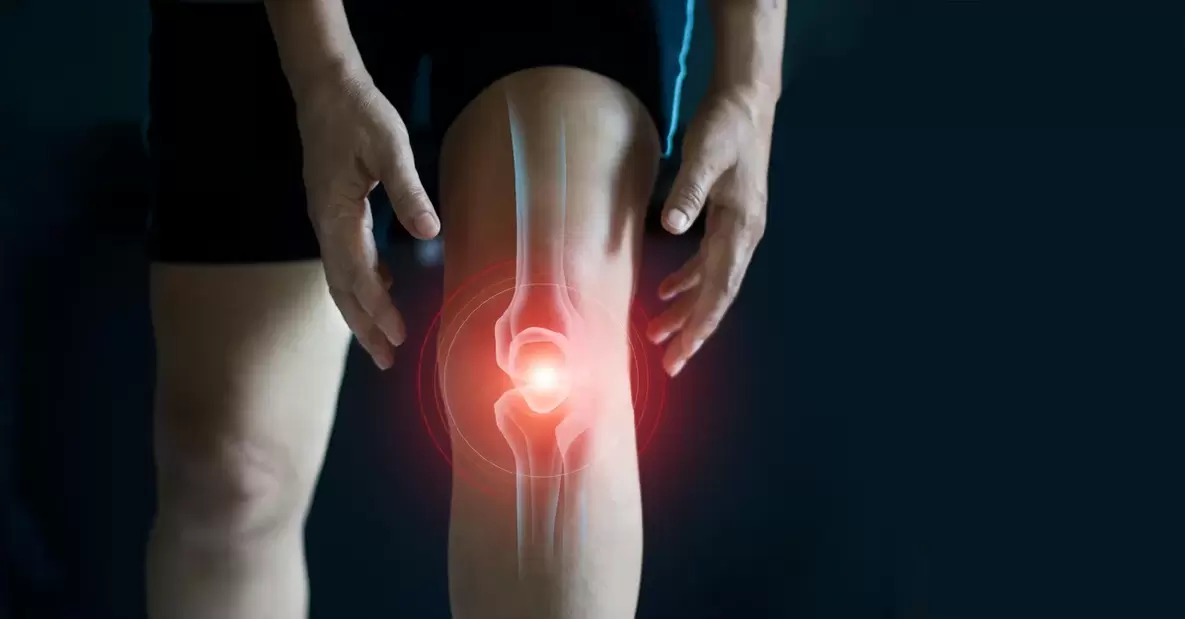
The knee joint is one of the largest joints in the human body. It has to bear a large load, since it carries almost the entire weight of our body. The knee joint is often injured.
Knee pain can be a sign of a serious medical condition. Knee pain not only limits movement, causes discomfort, but can lead to disability.
What is knee pain?
Knee pain is a common complaint and can occur in people of all ages. Pain in the knee joint itself can be not only the result of an injury, but also a sign of a serious disease (osteoarthritis, gout).
There are two types of pain: acute and chronic. Acute knee pain often occurs as a result of trauma or as a sign of an acute inflammatory process.
Chronic knee pain is characterized by increasing pain. The main cause of chronic pain is the development of degenerative-dystrophic changes in the tissues of the joints or a chronic inflammatory process. For the chronic process, the most characteristic is the appearance of uncomfortable pain in the knee joint.
In essence, knee pain can be arched back, aching and accompanied by a number of other symptoms:
- Swelling and redness in the joint area;
- joint deformity;
- Limitation of movements in the joint;
- Presence of a crunching sound in the joint during movement.
Causes of knee pain
Knee pain can be the result of aging and wear and tear of the components of the knee joint. The most common cause of sharp pain in the knee is injury and damage to the joint. The most common knee injuries are:
- Fractures and bruises, which often occur with falls and are accompanied by acute pain;
- Torn ligaments or tendons;
- cupped tears;
- Dislocation of both knee and patella.
Against the background of injury and damage to the knee joint, diseases such as bursitis and tendinitis can develop.
Other causes of pain in the knee joint include the presence of degenerative-dystrophic changes in the tissues of the joint, as well as inflammatory processes:
- Bursitis. Bursitis is an inflammation of the joint pocket, accompanied by not only pain, but also swelling.
- Tendonitis. Patellar tendonitis is an inflammation of one or more tendons. This inflammation can occur when the tendons of the kneecap are damaged. They very often occur in people professionally engaged in running, jumping, skiing, as well as cyclists.
- Arthritis is an inflammatory condition of the joints. The most common is osteoarthritis. Osteoarthritis is a chronic disease in which all components of the joint are affected, mainly cartilage, ligaments, capsule and muscle. Arthritis can also be infectious (septic arthritis) and autoimmune (rheumatoid arthritis).
The least common causes of knee pain include the presence of cysts and tumors that compress nearby tissues, thereby causing knee pain.
Several factors can increase your risk of knee pain:
- Overweight. Being overweight or obese puts more stress on the knee joint, increasing the risk of osteoarthritis.
- Presence of trauma to the knee joint in the past.
- certain sports. Certain sports put a lot of stress on the knee joint, increasing the risk of chronic injury.
- The presence of diseases such as osteomyelitis and osteoporosis, leads to brittle bones, thereby increasing the risk of fractures.
Knee pain while walking
Pain in the knee joint, which increases with movement, is often a sign of degenerative joint diseases (osteoarthritis). Pain occurs due to contact during movement of the joint surfaces, to some extent in the absence of cartilage tissue.
Knee pain when stretching and flexing
Pain in the knee during extension and flexion indicates an inflammatory process in the tendon-ligamentous apparatus of the knee joint, and also occurs with bursitis (bursitis). Tendonitis of the knee joint can occur when the patellar tendon is damaged. Most often, this pathology occurs in sports-related people.
The second cause of knee pain during flexion and extension is degenerative-dystrophic changes in the cartilage tissue of the joint (osteoarthritis).
Knee pain at rest
Knee pain at rest, especially at night, is often a sign of degenerative joint disease. Other causes include sprains, damage to the meniscus, cartilage, tendonitis (tendonitis), and peristalsis (bursitis).
Nighttime knee pain increases with age and is often seen in overweight people.
What not to do with pain syndrome
First of all, you should not self-medicate, but should immediately seek the help of a specialist. In any case, if there is a dislocation, do not attempt to straighten the joint yourself.
Avoid sudden movements, don't put too much load on the joint - this can only aggravate the pain.
Diagnose
If you have pain in your knee joint, you should consult an orthopedist. First of all, the therapist asks the patient, collects the complaints and conducts a thorough examination. To rule out comorbidities, the doctor may prescribe consultations with other specialists, such as a neurologist.
Instrumental diagnostic methods include X-ray, magnetic resonance or computed tomography (MRI/CT) and knee ultrasound.
Laboratory research methods are general blood and biochemical tests.
Knee pain treatment
Depending on the nature of the injury, the specialist will prescribe a specific treatment plan. Often, the treatment of knee pain is complex and includes pharmacological and non-pharmacological therapies.
Drug treatment includes nonsteroidal anti-inflammatory drugs (NSAIDs) and pain relievers. These drugs reduce inflammation and pain in the joints. A class of slow-acting drugs or chondroprotectors are also prescribed over a 3- to 6-month course to help reduce inflammation, joint pain, and slow cartilage breakdown, for example, these include: combination medicine containing glucosamine. and chondroitin sulfate.
Non-drug therapy is based on physiotherapeutic methods: UHF, massage, physiotherapeutic exercises, mud therapy, magnetic therapy and others. You should also wear special orthopedic insoles or shoes that are individually selected by your doctor.
If conservative methods don't work, treating knee pain requires a more serious approach: your doctor may recommend different surgical treatments.


































